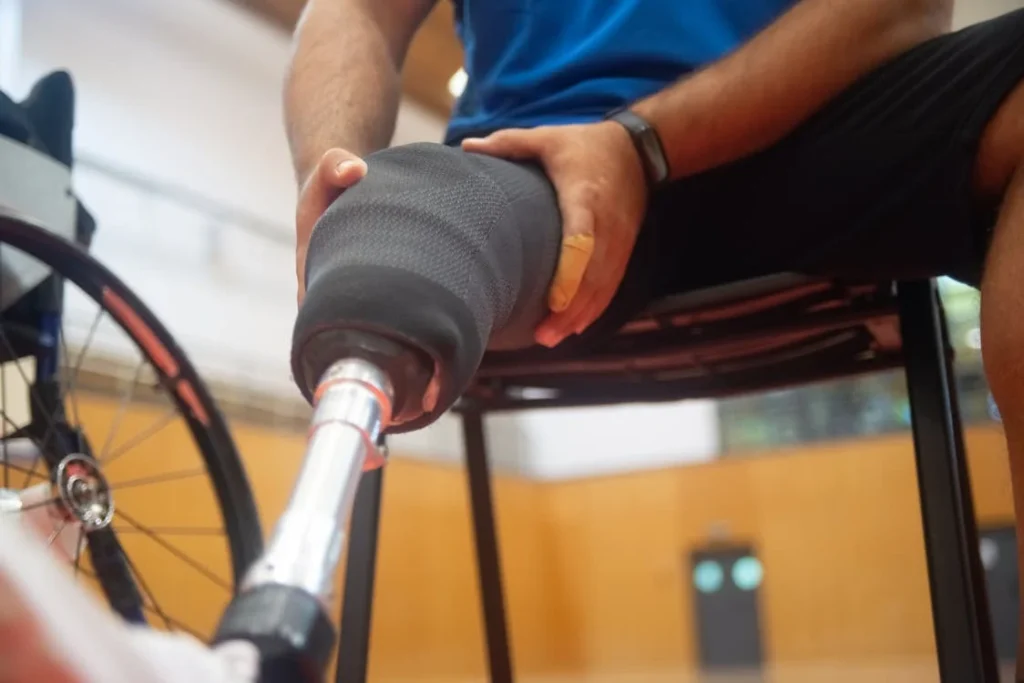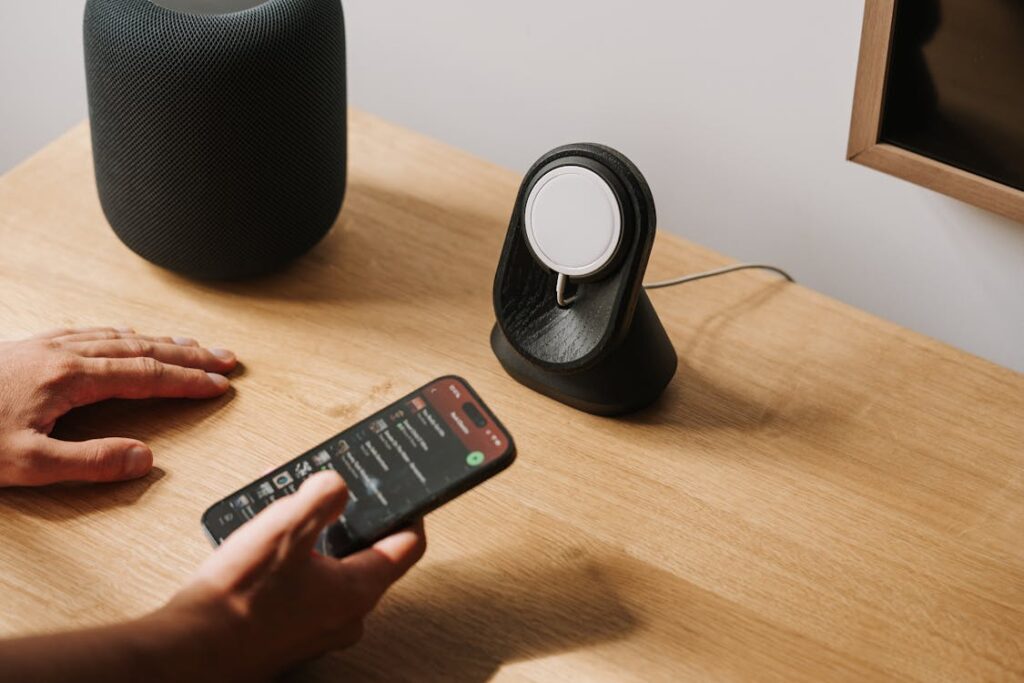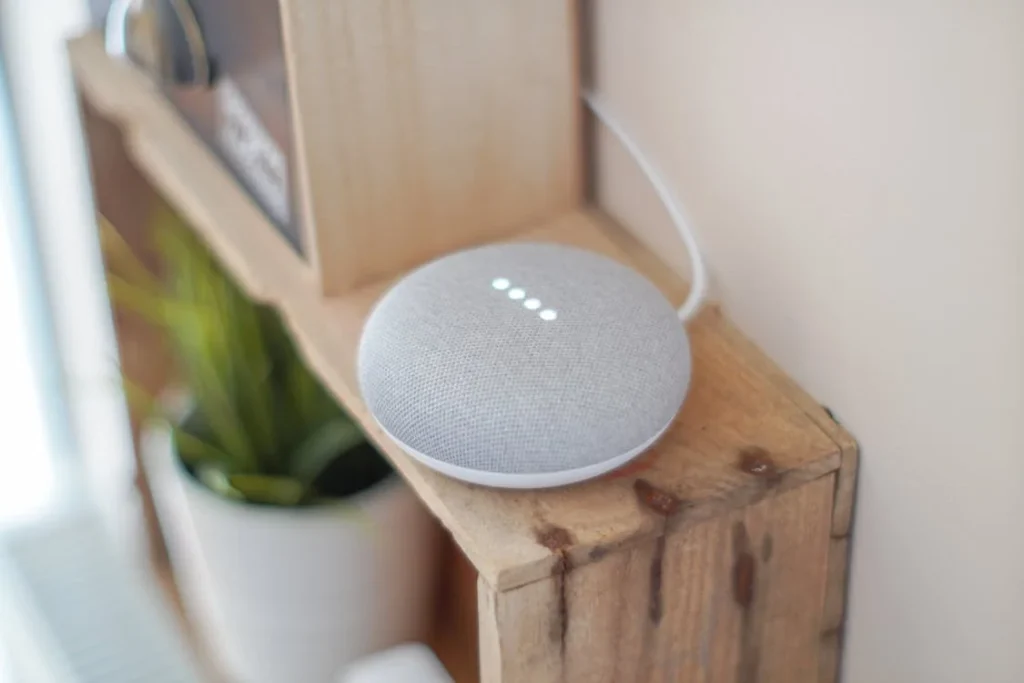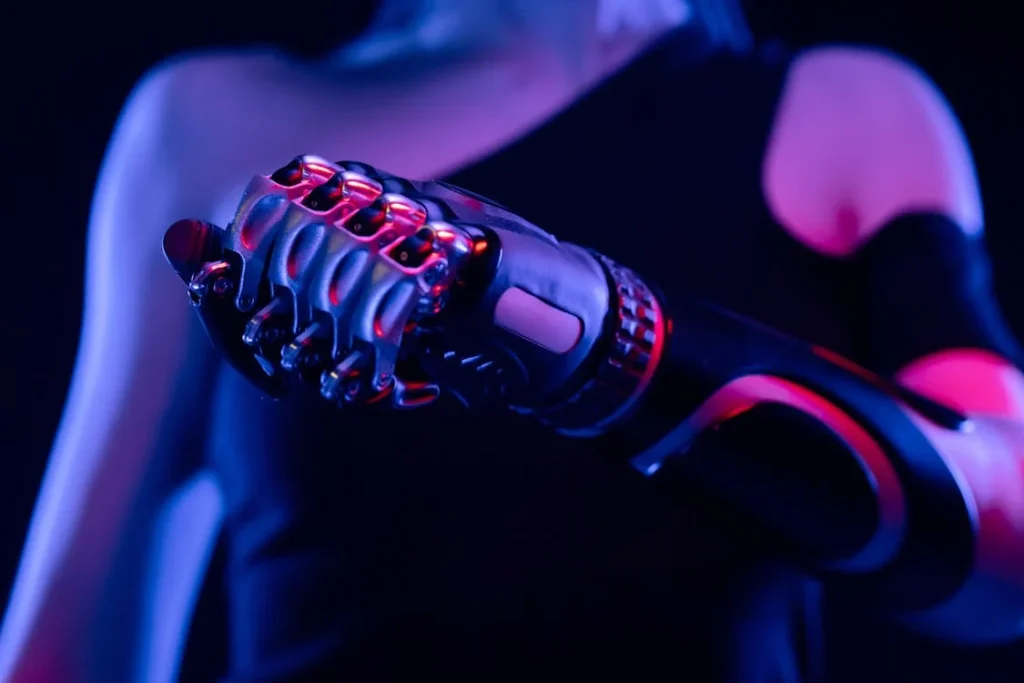Pain after an amputation isn’t always easy to explain. It can come and go, change from day to day, and feel different from one person to another. For some, it’s a sharp jolt. For others, it’s a dull, lingering ache. And sometimes, it’s not just physical pain—it’s emotional too. The mind and body are both affected after losing a limb. That’s why keeping track of pain and emotions becomes so important.
But memory is tricky. It’s hard to remember exactly how bad the pain was three days ago or how your mood changed last week. That’s where technology helps. Today, there are simple, smart tools that make it easier for people to keep track of how they feel—both in their body and in their mind.
At Robobionics, we’ve worked closely with amputees across India. And we’ve seen how using the right tools can improve not only physical recovery but also emotional healing. These tools aren’t just for doctors—they’re for anyone who wants to understand their own body better. When you track what’s really happening inside you, it becomes easier to get the right care, speak clearly with doctors, and feel more in control of your healing.

Understanding Pain and Emotions After Amputation
The Nature of Post-Amputation Pain
Pain after amputation is not like ordinary pain. It’s often more complex, and it can feel confusing for those experiencing it. There are different kinds of pain that may appear.
Some people feel pain where the limb used to be. This is called phantom limb pain. It feels very real, even though the limb is no longer there.
Others feel pain in the remaining part of the limb, which may come from the nerves, the skin, or the muscles adjusting to the new shape of the body.
The pain can change based on the weather, stress levels, or how the prosthetic fits. One day it might be barely noticeable, and the next day it might feel sharp and unbearable.
Pain doesn’t always follow logic, and that’s what makes tracking it so important. If you can note when it happens, how intense it is, and what might be triggering it, it becomes easier to understand what your body is going through.
Doctors often ask about pain levels during check-ups. But if you don’t have a way to remember what your pain was like last week or last month, it’s difficult to give clear answers.
That’s why tech tools that allow you to record pain in real time—when it’s happening—are so valuable. They take out the guesswork and create a clear picture over time.
Emotional Ups and Downs
Healing from an amputation doesn’t stop at the body. The emotional journey is just as important, and often, more complicated. You may feel strong one day and discouraged the next.
Sadness, frustration, anger, fear—they all come and go, sometimes without warning. You might feel proud of your progress, and yet, still feel the weight of what you’ve lost.
This emotional rollercoaster is completely normal. But it can be hard to talk about. Sometimes even close family members or friends don’t fully understand what you’re feeling.
This is where tracking emotions becomes helpful. Not just for sharing with others, but for understanding yourself better. By writing down your feelings or using apps that let you record your mood, you can start to notice patterns.
You might discover that your mood drops when your pain gets worse. Or that certain days of the week feel harder emotionally. These insights matter.
They help you take action—whether that means resting more, talking to someone, adjusting your prosthetic, or asking your doctor for help.
The goal of emotional tracking isn’t to fix every feeling. It’s to notice them, to accept them, and to begin to respond with care. Over time, this process builds emotional strength. You learn how to support yourself, even on the tough days.
Why Tracking Matters
Recovery after an amputation is not a straight line. It moves forward, then back, then forward again. Some days are filled with energy and hope. Others are clouded by pain or sadness.
Without a way to track your experience, it’s easy to feel lost in that cycle. You might forget how far you’ve come. Or you might miss warning signs that something needs attention.
Tracking pain and emotions gives you a map. It helps you see where you are and where you’ve been. It helps you speak clearly to your healthcare team.
It helps your family understand how to support you. And most importantly, it helps you understand what your mind and body need.
Tech tools are not magic. They don’t erase pain or stop sadness. But they do something just as powerful—they help you pay attention. And in the process, they help you take charge of your recovery.

Exploring the Tech: Tools That Make Tracking Easier
Apps That Put Pain and Emotions in Focus
Technology is at its best when it simplifies life, not when it complicates it. And for amputees, this means using tools that are easy to access, simple to use, and actually helpful in everyday life.
Many mobile apps are now designed to track pain and emotions in a way that feels natural—even for those who are not comfortable with technology.
Some apps let you record your pain level each day, usually on a scale from 1 to 10. You can also add notes about what the pain feels like, where it is, and what might have caused it.
Over time, these entries create a pain journal. The app might even turn your notes into graphs or charts, making it easy to see if your pain is getting better or worse.
This can be incredibly helpful during doctor visits, because it gives your healthcare team a detailed history of your symptoms.
There are also apps focused on emotional health. These allow you to record your mood using simple icons or words. Some ask a few daily questions like “How are you feeling?” or “What made you smile today?”
These small check-ins take less than a minute, but they help you stay connected to how you’re doing emotionally.
Some apps offer prompts to help you reflect, such as “What was the hardest part of your day?” or “What helped you feel calm?”
When used daily or even a few times a week, these tools start to build a picture of your emotional landscape.
They help you see how your thoughts and feelings shift over time. And they help you notice when you might need extra care.
What makes these tools even more valuable is how portable they are. Whether you’re at home, at work, or traveling for treatment, your records stay with you.
You can update them anytime. No notebooks to carry, no pages to lose—just one small tool that keeps track of something big.
Wearables That Monitor the Body in Real Time
Some people prefer not to use apps that require daily writing or reflection. For them, wearable technology offers another path.
These are devices you wear—on your wrist, your arm, or clipped to your clothing—that quietly collect data as you go through your day.
Most wearables track physical signals like heart rate, skin temperature, movement, and sleep patterns. Why does this matter? Because pain and emotions both affect the body in real, measurable ways.
A sudden spike in heart rate or a drop in sleep quality can be a sign that something is off—before you even realize it yourself.
For example, if your wearable shows that you’re waking up often during the night, it could mean your pain is worse at bedtime or your anxiety is rising.
If your heart rate is staying high even while you rest, it might be a sign of stress or discomfort. This data becomes a kind of silent journal. You don’t have to write anything down—it’s all captured for you.
Some advanced wearables even allow you to set reminders to breathe deeply, drink water, or rest if the data shows you’re under strain.
Others connect with your phone and sync with apps, so you can see all your information in one place. These small, thoughtful nudges help you care for your body before things get too hard.
In places like India, where access to regular therapy may not always be possible, wearables offer a form of self-care that is both modern and personal. They bring the power of observation into the palm of your hand.

Making Technology Part of Daily Life
Building Habits That Stick
One of the biggest concerns people have with using tech tools for health tracking is whether they’ll be able to stick with it. It’s easy to start with good intentions, but after a few days, life gets busy.
Reminders go ignored, apps go unopened, and wearables sit untouched on a table. This is completely normal. The key isn’t to be perfect. It’s to make tracking a habit that feels natural—not like a chore.
Start small. You don’t have to track everything all at once. Choose one thing—maybe just your pain level each morning. Or your mood before bedtime.
Do it for a few days, and notice how it feels. If it helps, keep going. If it feels too much, change the time of day or the way you do it. What matters is that the habit fits into your life—not someone else’s idea of how things should be.
Over time, the act of checking in with your body and mind becomes a routine. Just like brushing your teeth or checking your messages. It becomes a part of caring for yourself.
And once it’s a habit, the benefits begin to grow. You start to see patterns. You feel more aware. You make better choices because you know how you’re doing—not just guessing.
Another trick to building this habit is to tie it to something you already do. For example, open your tracking app right after your morning tea.
Or check your wearable data while brushing your hair. These tiny connections help the habit stick without needing willpower every time.
Sharing Data With Doctors and Family
One of the most useful things about tracking pain and emotions through tech tools is that you can easily share your records with people who are helping you heal.
Doctors, therapists, and even close family members can better support you when they understand what you’re going through—not just once in a while, but on a day-to-day level.
Instead of trying to remember everything during a quick doctor’s appointment, you can simply open your app or print your records. You can show how your pain has changed over time.
Or point out that your sleep has been poor for two weeks, which might be linked to a new medication or a change in your prosthetic.
This kind of clear, consistent data helps your healthcare team make smarter decisions. It saves time. And it makes sure your concerns are taken seriously.
Families also benefit from this clarity. Often, loved ones want to help—but they don’t always know how. When you can share how you’ve been feeling lately, it opens the door to more honest conversations.
Maybe they notice you’ve been more tired, and now they understand why. Or they see that your mood drops on weekends, and they offer support when it matters most.
Tech tools don’t just track data. They open up connection. They make invisible struggles visible—and once seen, those struggles can be met with care.
Choosing the Right Tools for You
Not every app or device works for every person. The right tool is the one that feels right to you. If you enjoy writing and reflecting, a journal-style app may be a good fit.
If you’re someone who forgets to log things, a wearable that tracks in the background might work better. Some people prefer tools with a clean, simple layout. Others enjoy more interactive features.
At Robobionics, we often guide our patients through this decision. We suggest tools that suit their lifestyle, whether they live in a busy city or a quiet village, whether they use smartphones comfortably or are just getting started with technology.
What matters most is that the tool is easy to use and helps you feel more in tune with yourself.
Technology is not the answer to every problem. But when it’s used wisely, it becomes a strong partner in recovery.
It adds clarity to the chaos. It turns feelings into patterns. And it helps you take steady steps forward, even on days that feel stuck.

Emotional Independence and Self-Advocacy Through Technology
Reclaiming Control After Trauma
One of the hardest parts of life after amputation is the sudden loss of control. For many amputees, the body no longer responds the way it once did.
Schedules revolve around doctor visits, therapy sessions, and prosthetic fittings. Family members begin to take over everyday tasks, sometimes with the best intentions, but it still leaves the person feeling dependent.
This shift can create a quiet sense of helplessness. You may begin to feel like decisions are being made for you, not with you.
That’s why emotional independence becomes so important. It’s the ability to feel like your life is still yours—that you have a say in your care, your routine, and how you want to heal.
Tech tools, when used intentionally, can support that sense of independence. They don’t replace doctors or family help. But they give you back a form of personal control.
You decide what to track. You decide what your pain feels like. You decide how to describe your mood. These small acts of self-reporting are powerful because they are yours.
Each time you update your pain log or record how you’re feeling, you are taking charge of your healing. You are saying, “I know myself. I understand my body. And I have something to say about how I’m doing.”
The Confidence to Speak Up
In medical settings, it’s common to feel overwhelmed—especially when surrounded by professionals using technical words or speaking quickly.
You might forget to mention something important, or feel unsure about how to describe what’s really going on inside you. This happens to so many people, especially when emotions are still raw from the trauma of amputation.
But when you use a tool that clearly records your symptoms and feelings, it becomes easier to speak up. You don’t need to rely on memory. Y
ou can simply open your app, show your entries, and say, “This is what’s been happening.” That one action shifts the dynamic. You become an active participant, not just a patient waiting to be told what to do.
Doctors notice this. They listen differently when a patient brings organized, thoughtful data. It shows that you’re paying attention, that you care, and that you’re engaged in your own recovery. And this respect strengthens your voice even more.
This also helps when talking to employers, school authorities, or community members. If someone questions your limits or progress, you have real, detailed records to explain your needs. This is what self-advocacy looks like—clear, calm, and confident.
Strengthening Emotional Boundaries
Healing is not just about improving pain levels or mobility. It’s also about rebuilding emotional boundaries—those invisible lines that protect your energy, your peace, and your truth.
After trauma, those boundaries can feel thin. People may offer too much advice, ask invasive questions, or expect you to “move on” quickly.
But when you understand your emotions through regular tracking, you become better at noticing what affects you. You learn when to say no.
When to rest. When to talk, and when to protect your space. Tech tools help sharpen this awareness. They show you your own emotional patterns—and that knowledge becomes a kind of shield.
You don’t have to explain everything to everyone. But when you know how you feel, and why, you start to respond from a place of clarity instead of confusion. That clarity builds emotional strength—quietly, gently, but firmly.

Tech as a Bridge to Peer Support and Shared Recovery
The Loneliness of Silent Healing
After an amputation, even with family support, many people feel alone. The experience is so personal, so life-altering, that it’s hard to find others who truly get it.
Friends may be kind, but they don’t know what phantom pain feels like. Relatives might care deeply, but they’ve never had to re-learn balance or manage grief over a lost limb.
This emotional isolation is one of the quietest wounds amputees carry. And without connection, the path to recovery can feel heavy and slow.
But this is where technology—especially pain and emotion tracking tools—can do something unexpected. They can help bring people together.
Many apps today are designed not just for self-monitoring, but also for safe sharing. Within these tools, there are options to connect with others going through similar journeys.
Sometimes it’s through discussion boards. Other times it’s within app-based communities where users can post, comment, or simply observe. These spaces are not about advice or pity. They’re about understanding.
When someone posts, “My pain spiked today and I don’t know why,” and another replies, “That happened to me last week too, here’s what helped,” that tiny moment becomes a thread of connection. A reminder: you are not alone in this.
The Role of Shared Tracking in Group Healing
In peer support groups—whether in person or online—tech tools can deepen the quality of conversation. Instead of vague updates like “I’ve had a hard week,” someone might share a chart showing their mood swings or pain spikes.
This invites more meaningful dialogue. Others can reflect on similar patterns. Group leaders can guide discussions with more context. Healing becomes not just personal, but shared.
This shared tracking can also spark hope. When someone posts their progress—a week with less pain, or a better emotional trend—it inspires others. I
t turns recovery into something collective, not just private. These tools can become the heartbeat of peer communities, quietly linking people across cities, languages, and life experiences.
Even in rural areas, where access to formal support groups may be limited, technology bridges the gap.
Amputees with smartphones and basic internet access can find their way into virtual spaces where their pain is not questioned, their journey is not judged, and their voice is heard.
When Stories Become Medicine
Every time someone shares their pain record, their mood chart, or their journaled thoughts from an app, they are sharing their story—one day at a time.
And when those stories are seen and acknowledged, healing deepens. Not just for the person sharing, but for those reading too.
This creates a kind of emotional chain reaction. One person dares to be open. Another gathers courage from that.
A third finds relief in finally saying, “Me too.” Technology doesn’t replace human connection—it makes it easier. It turns isolated healing into something human, warm, and real.
This is especially important in cultures where mental health is still hard to talk about openly. By allowing private sharing that can later be made public within trusted circles, tech tools give people a safe on-ramp into emotional conversations.
And over time, those conversations become community. And that community becomes strength.

The Future of Healing Is Personal, Connected, and Tech-Enabled
A New Kind of Partnership in Recovery
The journey after amputation is long and layered. It’s about rebuilding the body, yes—but also rebuilding identity, trust, and daily life.
Technology, when designed with empathy and used with intention, can be more than just a tool. It becomes a partner.
It walks beside you, quietly helping you notice, record, reflect, and connect. It reminds you that healing isn’t something that happens to you. It’s something you shape, step by step.
At Robobionics, we’ve seen how a simple pain log can start a life-changing conversation. How a wearable tracking device can alert someone to early signs of emotional fatigue.
How a digital mood diary can open doors to better therapy. These aren’t just devices—they’re bridges. Bridges to better understanding, better care, and stronger self-advocacy.
The future of prosthetic care isn’t just about advanced limbs. It’s about understanding the whole person. That means listening to what the body says in pain, and what the heart whispers in emotion.
It means creating systems where amputees are not just patients—but partners in their own recovery.
Conclusion
If you’re an amputee, or caring for someone who is, know this: you don’t have to keep everything in your head. You don’t have to rely on memory, or try to explain what you’re feeling when words aren’t enough. There are tools—simple, smart, and built for people like you—that can help.
Start small. Choose one app, one wearable, or one daily check-in. Make it yours. Let it guide you, not overwhelm you. Over time, these small tools bring big change. They show patterns. They build courage. They connect you to others who understand. And most of all, they remind you that your pain and emotions matter—and that you have the power to shape your recovery.
At Robobionics, we believe that healing is not just medical—it’s emotional, personal, and deeply human. And with the right tools in your hands, you can begin that healing today—not just with hope, but with clarity and control.



